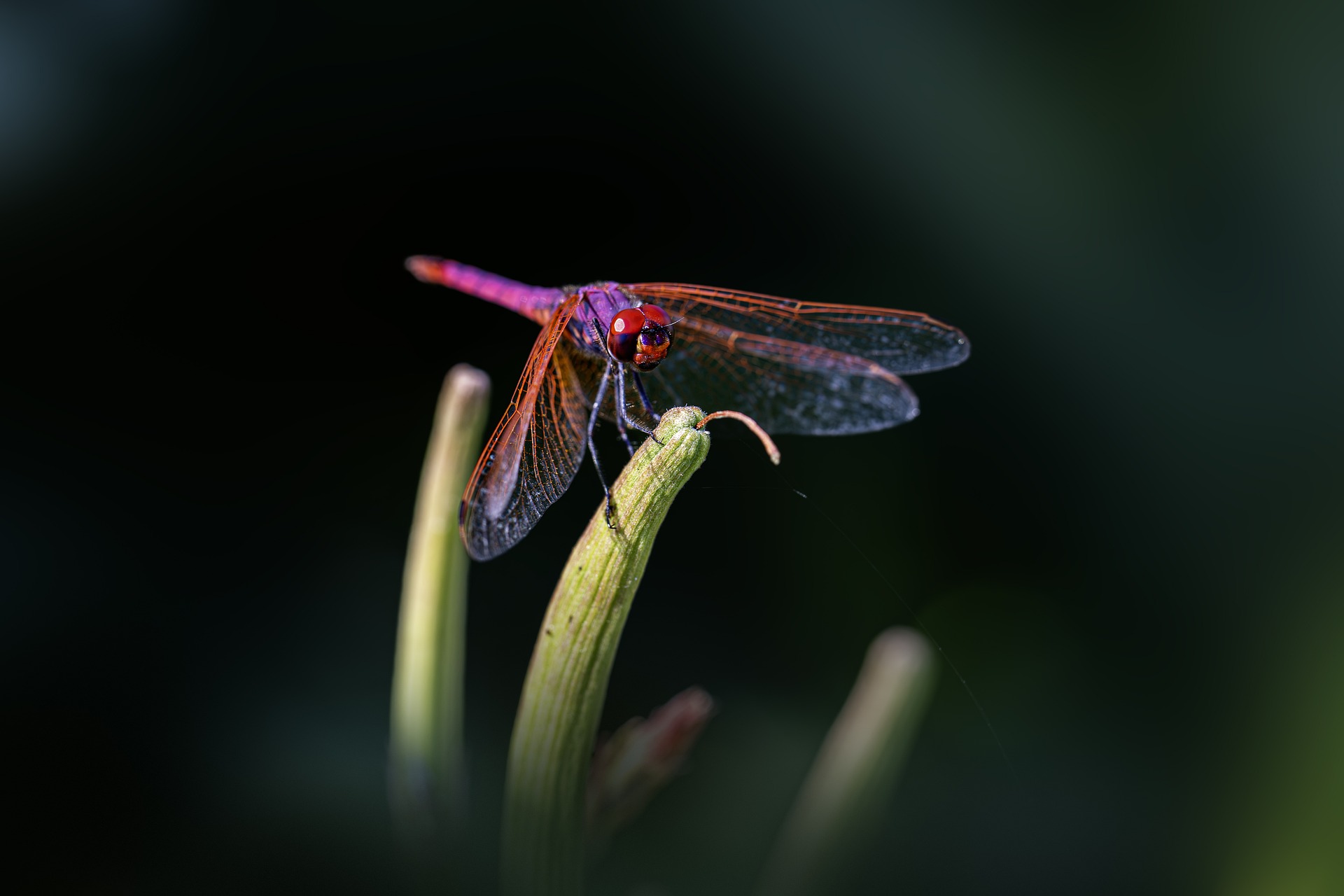Here’s a full natural history overview of the Violet Dropwing (Trithemis annulata), one of the most striking dragonflies of southern Europe, Africa, and beyond:
Violet Dropwing (Trithemis annulata)
Taxonomy & Classification
- Kingdom: Animalia
- Phylum: Arthropoda
- Class: Insecta
- Order: Odonata
- Suborder: Anisoptera (Dragonflies)
- Family: Libellulidae (Skimmers)
- Genus: Trithemis
- Species: T. annulata
- Common names: Violet Dropwing, Purple-blushed Dropwing
General Description
- Size: Medium-sized dragonfly, body length 33–40 mm, wingspan 60–70 mm.
- Male:
- Striking violet to crimson body due to a bluish-purple waxy bloom (pruinescence) covering the red base color.
- Eyes bright red.
- Wings with a reddish flush, darker veins, and a small amber patch at the base of hindwings.
- Characteristic perching posture: wings held forward and down, giving the name “dropwing.”
- Female:
- Yellowish-brown body with dark markings.
- Wings more transparent, with less reddish flush than the male.
Behavior & Lifestyle
- Activity: Strongly territorial; males perch prominently on reeds, twigs, and stones near water.
- Flight: Agile and rapid, with frequent returns to the same perch.
- Perching habit: Wings drooped downwards, abdomen raised slightly.
- Sociality: Often abundant in suitable habitats, with many individuals defending territories close together.
Diet
- Adults: Feed on small flying insects such as mosquitoes, midges, and flies.
- Larvae (nymphs): Aquatic predators feeding on insect larvae, tadpoles, and other small aquatic organisms.
Life Cycle
- Eggs: Laid directly into water by dipping the abdomen.
- Nymphs: Develop underwater for several months to over a year, depending on climate and conditions.
- Emergence: Nymphs climb onto vegetation or stones to metamorphose into winged adults.
- Adult lifespan: Typically a few weeks to a couple of months, depending on predation and weather.
Habitat
- Prefers still or slow-flowing freshwater bodies:
- Lakes, ponds, reservoirs, irrigation canals, and slow rivers.
- Tolerant of warm, open, and disturbed habitats, including man-made water bodies.
Geographic Range
- Native to Africa and the Middle East.
- Expanded into southern Europe since the late 20th century, now established in:
- Spain, Portugal, southern France, Italy, Greece, and many Mediterranean islands.
- Range continues to expand northwards with warming climates.
Ecological Role
- Pest control: Important predator of mosquitoes and midges.
- Prey species: Eaten by birds, amphibians, and larger dragonflies.
- Indicator species: Presence often reflects healthy warm-water habitats, though it tolerates moderate disturbance.
Conservation Status
- IUCN Red List: Least Concern.
- Population trends: Expanding in Europe; common and stable across Africa.
- Threats: Local declines may occur due to pollution, habitat drainage, or waterway modification, but overall species is resilient.
Interesting Facts
- One of the most vividly colored dragonflies in Europe.
- Its rapid northward expansion makes it a classic example of a climate change “winner.”
- The “dropwing” posture is believed to help regulate temperature and possibly reduce glare for hunting.
- Can often be seen basking in full sun, unlike many dragonflies that prefer shaded perches.
Visited 837 times, 2 visit(s) today
Views: 1128
Subscribe to the newsletter:
